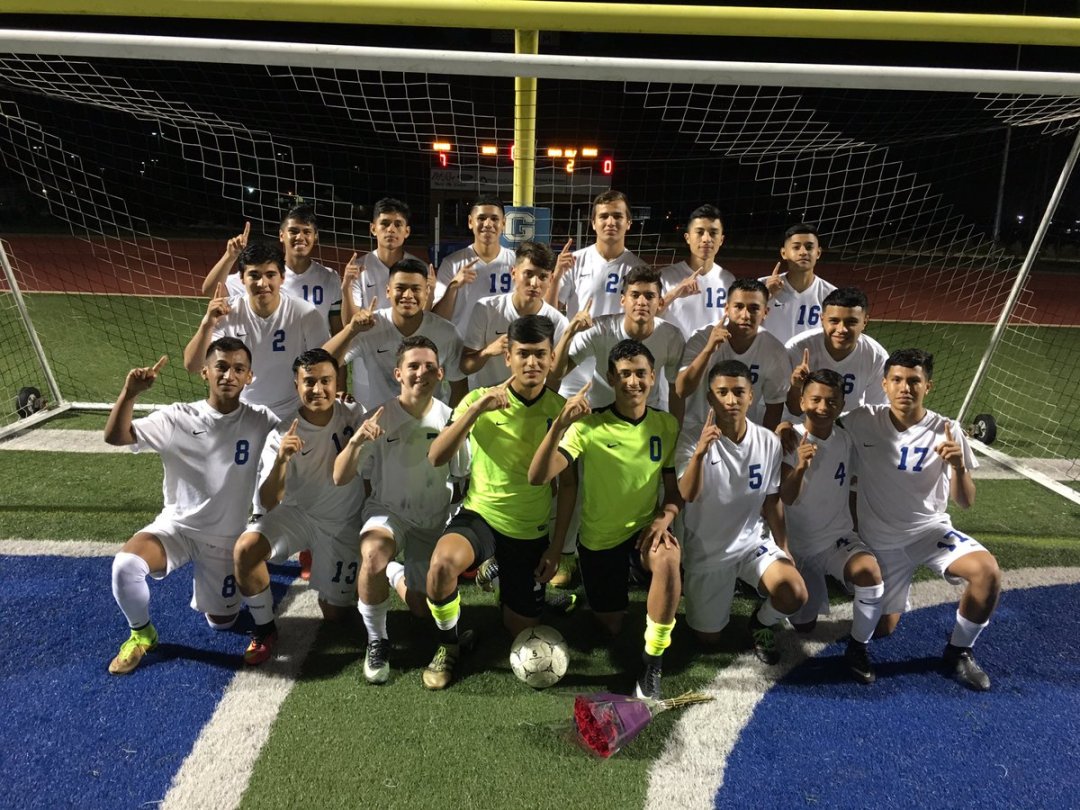I started coaching in 2016 as Dickinson High Schools JV-A soccer coach and Varsity assistant soccer coach, working under Head Coach Daniel Edinburgh and Assistant Coach Adam Meadows. I have long loved the game of soccer, in fact my earliest childhood memory is kicking around a size 3 soccer ball at the age of 3. From there I have continued to play soccer and try to follow as much of the sport I can. That being said, I thought I would be a natural at coaching soccer as I am able to design and implement drills based on team and player needs and my ability to analyze game play and game strategies. However, all the abilities I had developed had not prepared me for being a coach. As I discovered, coaching is about managing and leading others to work together and through this the team plays better as a unit and consequently, they win.
The 2016 season for the Dickinson Varsity soccer team was very special and I am blessed to have been a part of it. It was the first time the organization implemented a team building exercise to bond players together. After its implementation, the soccer team grew and went on to become District Champions. In this article I would like to share with you one of the best things I discovered as a coach, a team building exercise that brought our players together to play like a family.
In short, the exercise consists of players and coaches sharing about their lives and is followed by giving affirmations to each other. It’s done in steps and requires no props, only time, team members, and coaches. It is important to note that individuals need to buy-in. The more an individual contributes and is empathetic towards those sharing, the better the results. After the exercise their should be a noticeable change in the demeanor of the players: their should be a bond, or trust, between the team members; players will be relaxed and/or relieved; they might joke around light-heartedly, but are supportive of each other.

The exercise begins with the head coach meeting with all the team and assisting coaches. The coach tells the students the purpose of the exercise, ‘to bring us together as a family’. He then informs the students of a pole taken by returning U.S. Marines, ‘A survey was taken that asked Marines why they fought and did the things that are required in war, and what do you think the #1 answer was?’ Students are given a chance to answer, ‘for family’, ‘for country’, ‘to survive’.. Then the head coach reveals, ‘The #1 reason why Marines do what they do is because they do it for the brother on their left, and the brother on their right. They are a family and work as a family to accomplish their mission, always thinking about and supporting their team members.’ The coach then goes on to say that this is the purpose for the meeting tonight, we should become a family. A family encourages, trusts, works together, fights and makes up, but always stays together, and is nurturing to each other. These are the qualities of a successful team.
Next, the Head coach models the exercise by answering these simple questions:
- What is the name of your first girlfriend/boyfriend or what is the name of your first pet?
- What was the outstanding characteristic of the best team you ever played on?
- Who is the most influential person in your life, and why?
- Tell us your life story. Can be brief or detailed.
After the head coach finishes telling his life story, the team should instantly feel more connected to their coach. Usually, their are some difficult truths to be said by the speaker, and if at all possible the head coach should model what its like to share some of these difficult or very endearing truths about his/her life. In fact, the room may feel a little tense at times while someone is sharing their stories. The person answering the questions is not out to shock their audience, but supposed to open up and be honest. This is very hard to do for some, even for the person leading the exercise.

After the coach finishes answering the questions, s/he may instruct the players that they will be splitting up into smaller groups and answering the same questions in their groups. Smaller groups led by assisting coaches or team leaders assures that the activity can be completed in a timely manner. Before the students depart, the head coach reassures the students of confidentiality and reminds them to listen and support whomever is speaking.
From here the exercise is repeated, just as the coach modeled to the team. The questions start off easy and progressively get more intimate and difficult to answer as they go. Each group member is led by a coach; the coach starts by answering the questions and the players follow. Players may take notes about each group members’ stories to better refer back to their unique story. This is important because after every group member has gone it is time for affirmations.
The affirmations portion of the exercise is probably the single most important part of the exercise. After students share their intimate life stories, it’s time to reassure them that they are special; that their team members see what makes them unique and important to the team; that the individual is better understood and appreciated by his/her teammates. During the affirmations part, the person receiving the affirmations stands up as his/her teammates go around and give the player compliments. The students who are giving the compliments must have someone who is not saying the affirmations write down their affirmations for the person standing. This preserves the affirmations as written record that the player receives after all affirmations have been given. This way the student can turn to these written affirmations if they are ever experiencing hard times or self doubt. It should be noted that it is not required for the students to give affirmations to the coach leading the group, however, if the exercise has been done correctly the students will want to affirm the coach.
This simple team building exercise proved very effective for our soccer program. We discovered it halfway through the season and implemented it after a tough 2-1 loss to a rival high school. After the exercise our program went on to play as a cohesive unit, a family, inspiring even players on the bench to get more involved and encourage those playing. Our team went on to finish the season without losing another game and winning district. I cannot recommend this team building strategy enough and hope you find similar success in your organization.
Step By Step Directions:
Directions of Team Building Activity
Related Articles:
Galveston Daily News Article 3/7/17
Galveston Daily News Article 3/20/17

